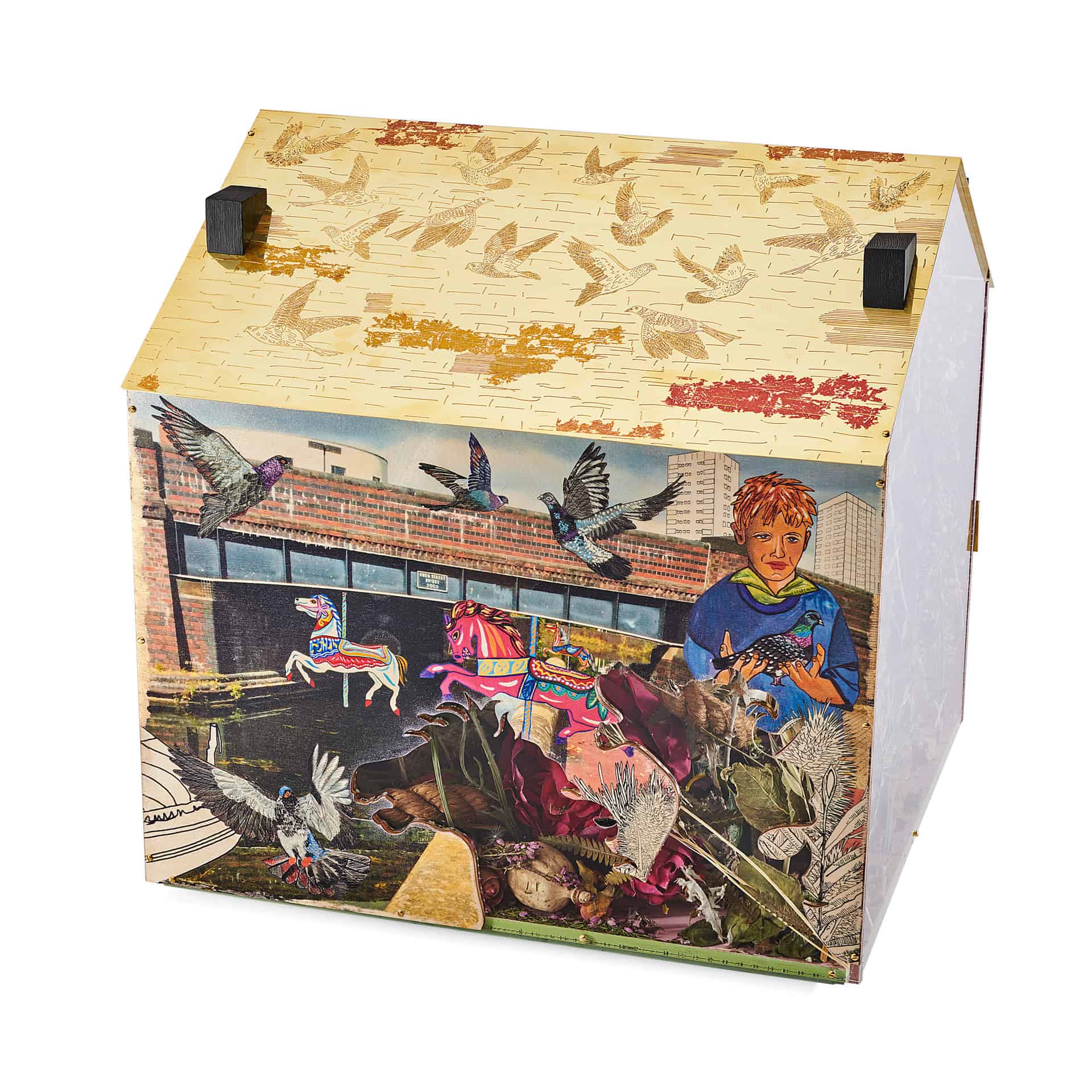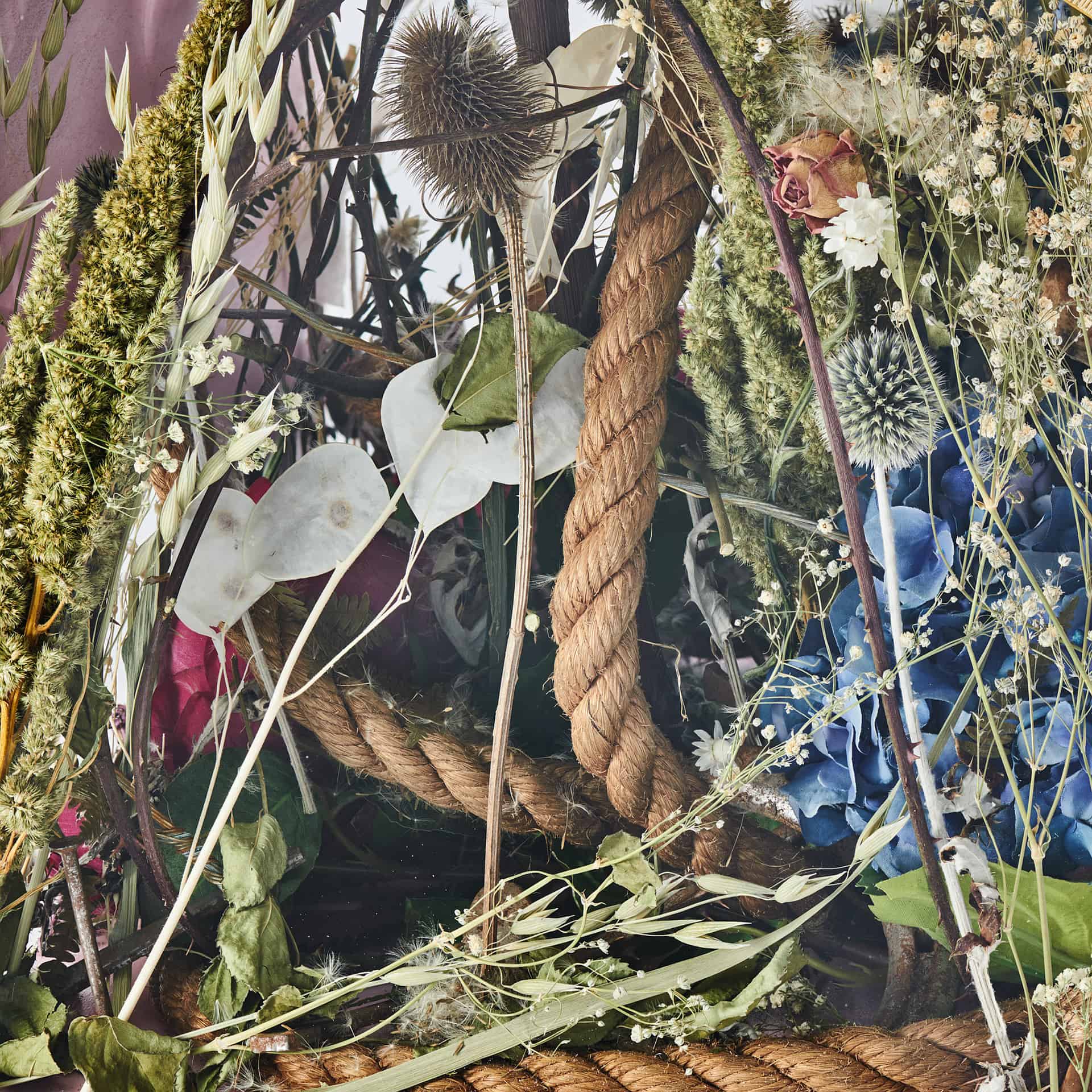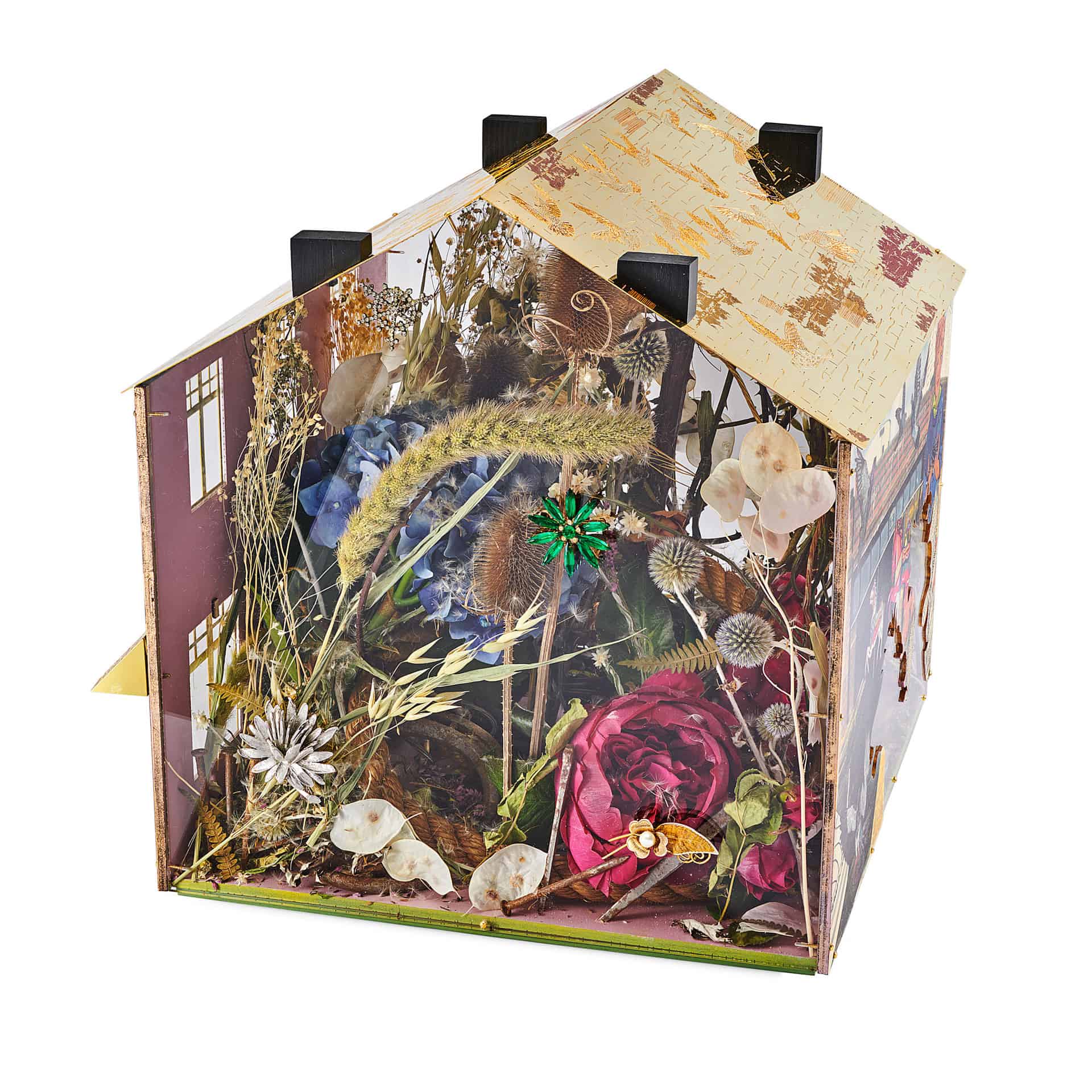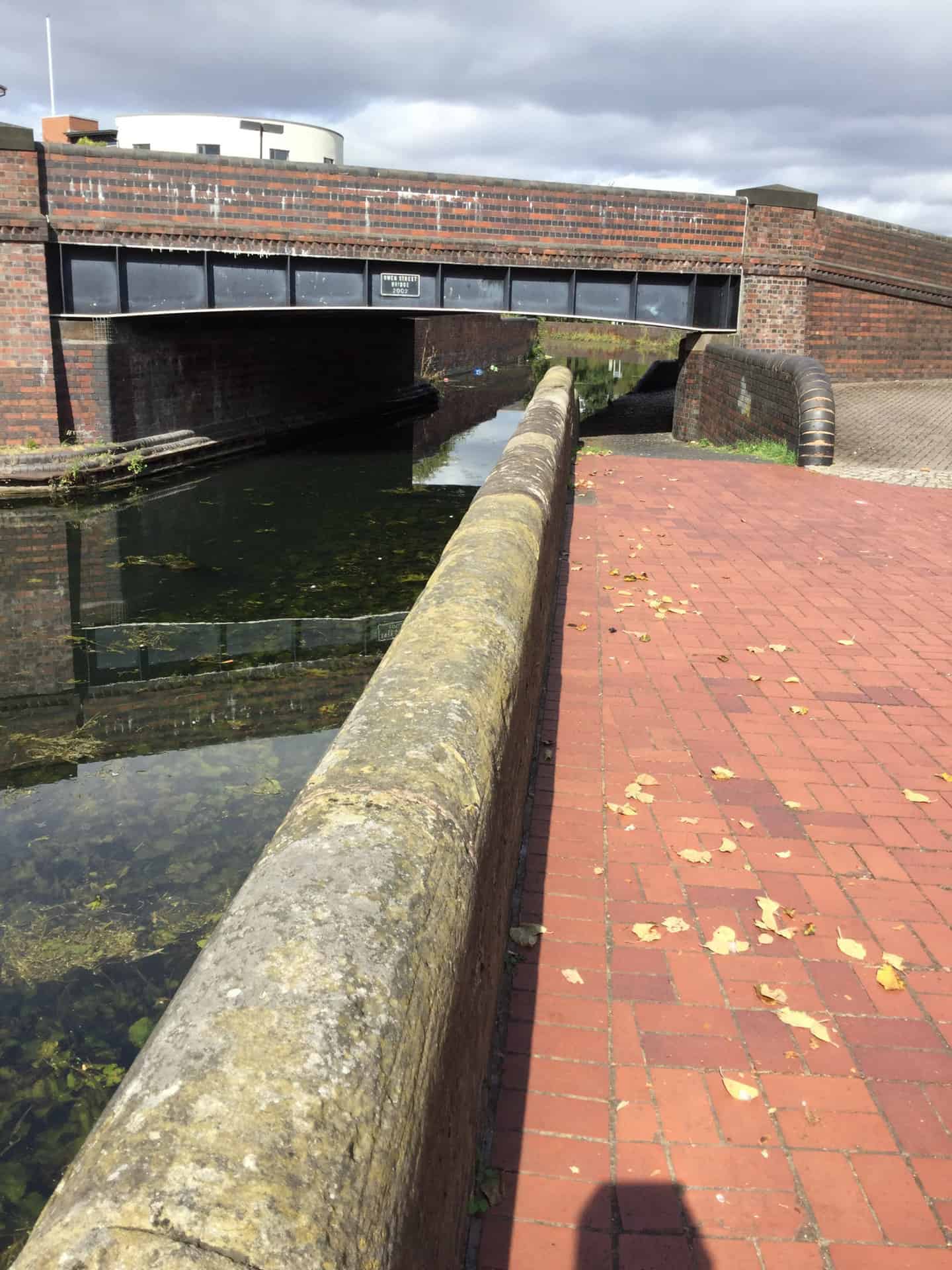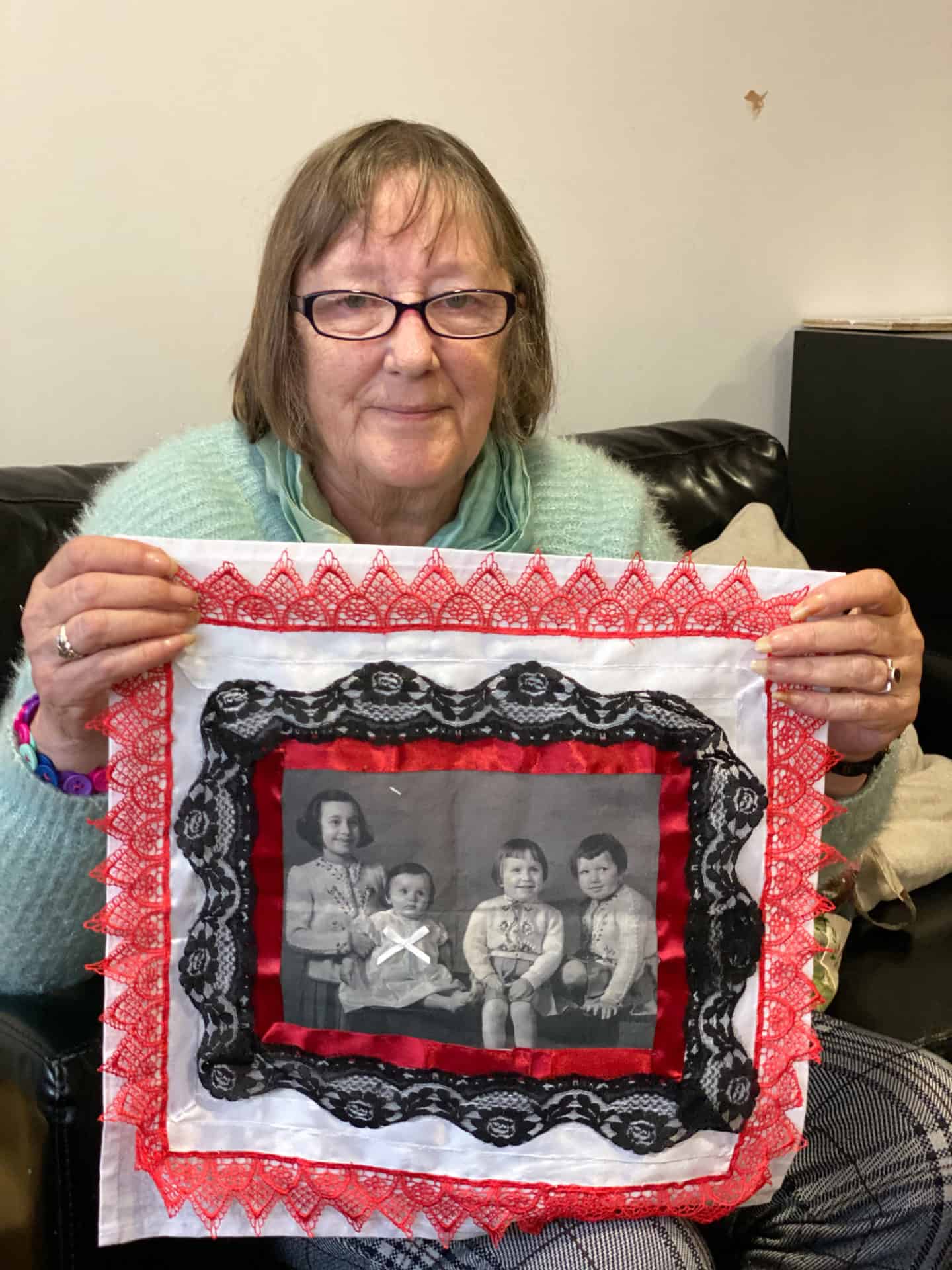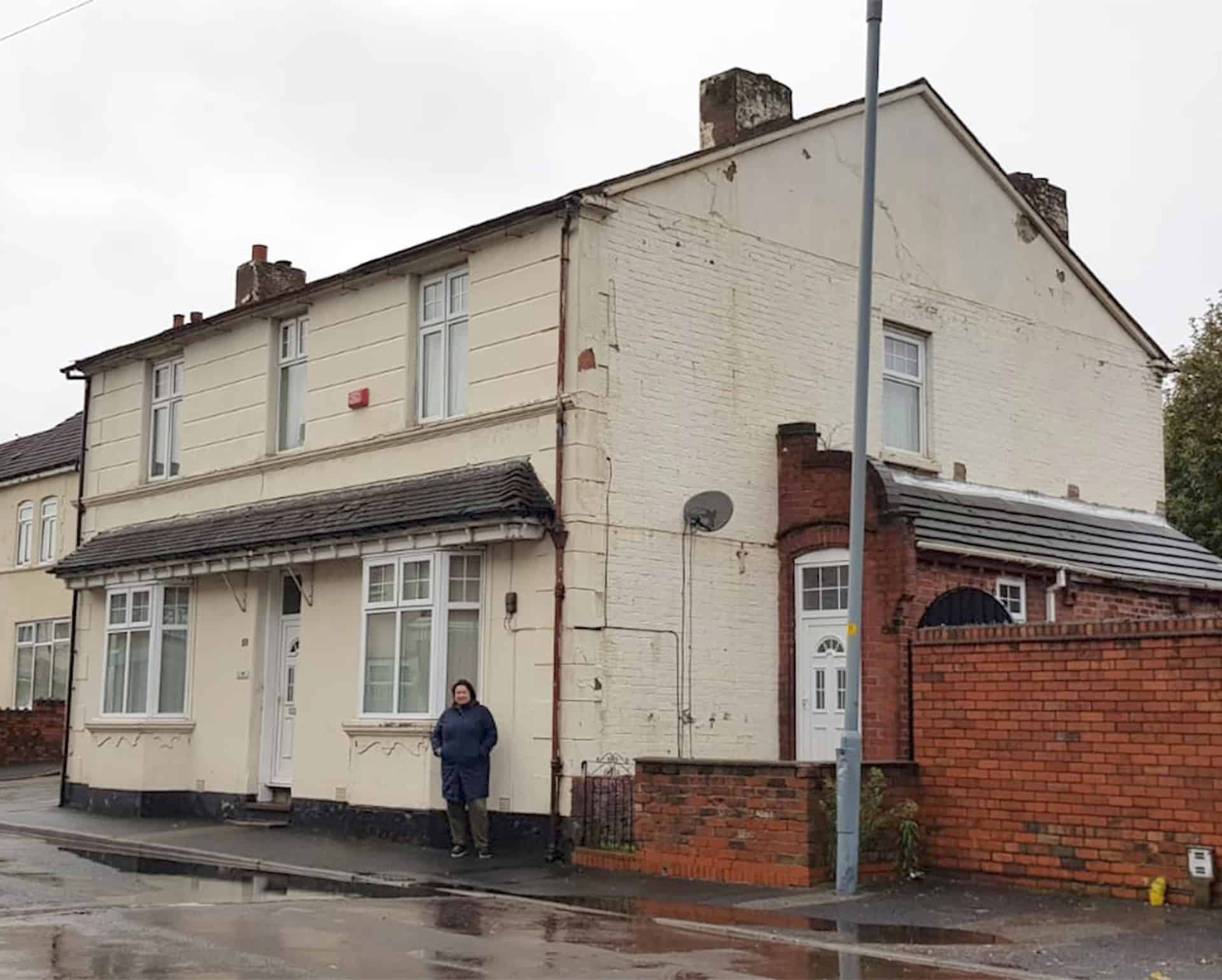A Place With No Name
The commission for the Living Memory Project was an opportunity to unearth elements of my personal family history and to share my memories with local people and for them to share their stories with me. My great grandad was a drayman and his daughter (my grandmother) Rose, was born in 1921 above a pub (now a private house) in Tipton. The Black Country is full of stories of forgotten places and industry now reclaimed by nature and buildings that have taken on new narratives through the passing of time.
My sculpture A Place With No Name emerged out of conversations with local people and workshop participants, my research into my family roots and explorations of the local area. The artwork is based on the former pub where my grandmother was born with echoes of its former life evident only in the porch and double-fronted windows. The work brings together the past and present, overlaying imagery that references fleeting memories and transient conversations. On closer inspection of the ‘house’ you will find old nails, horseshoes and rusty tools embedded amongst wildflowers – my grandmother’s favourite flowers — and grasses found in edgelands around the Black Country. A Place With No Name and the artwork created by participants in my community-led workshops pay homage to the forgotten places and stories that still exist in our memory.
Gather Café Workshops
The workshops at Gather Café in Dudley town centre invited local people to share their memories of the Black Country and create personal works of art. Participants had the opportunity to print personal photos onto textiles which they could then embellish with embroidered motifs and decorative borders. The work often depicted family members past and present as well as special places and personal narratives deeply rooted in the Black Country and beyond.
Participants produced work that was joyous, deeply emotional and melancholic. Some of their pieces were based upon personal stories that spanned several family generations and touched upon experiences of bereavement, adoption and a sense of belonging. Shared stories included dreams of carousel horses prancing underneath Tipton canal bridges and the suggestions that you can hear the singing caverns if you put your ear against the tree trunks by the quarries. A walk with participants in the forest area at the back of the Black Country Living Museum and on the edge of the town revealed disused shafts, blocked canal tunnels and bricked up, graffiti-covered buildings. We explored tree-covered areas on old industrial sites that in turn covered fossils millions of years old. This work and my work taken together, celebrates our shared personal heritage and our deep connection to place.

